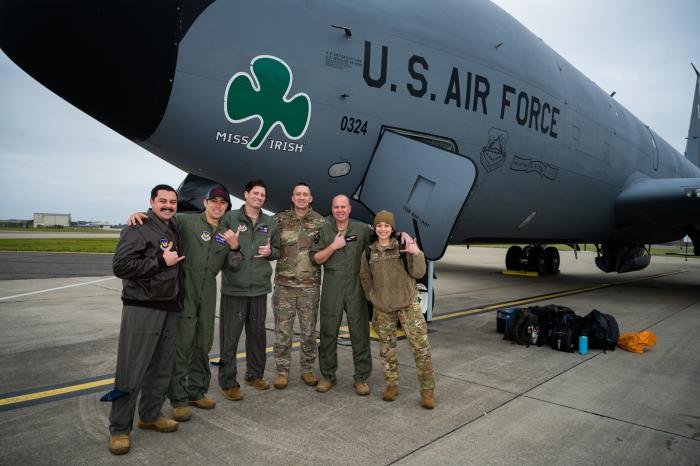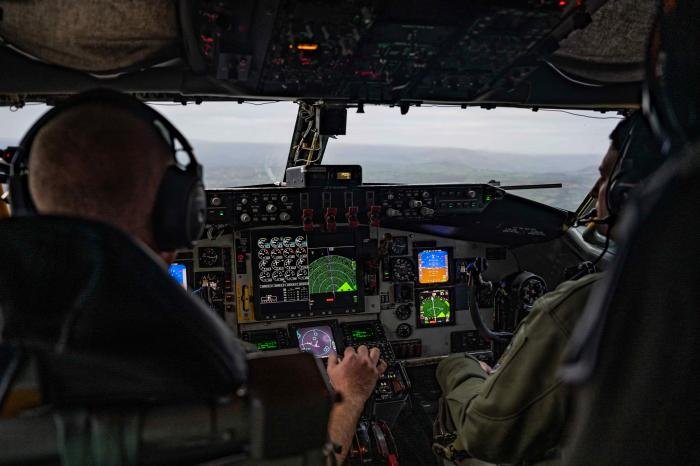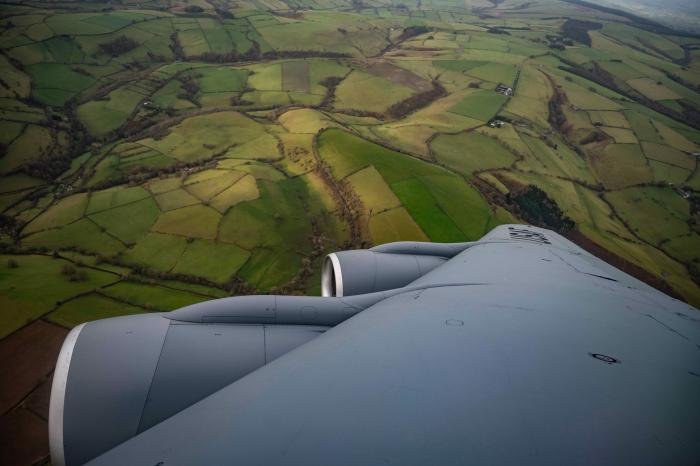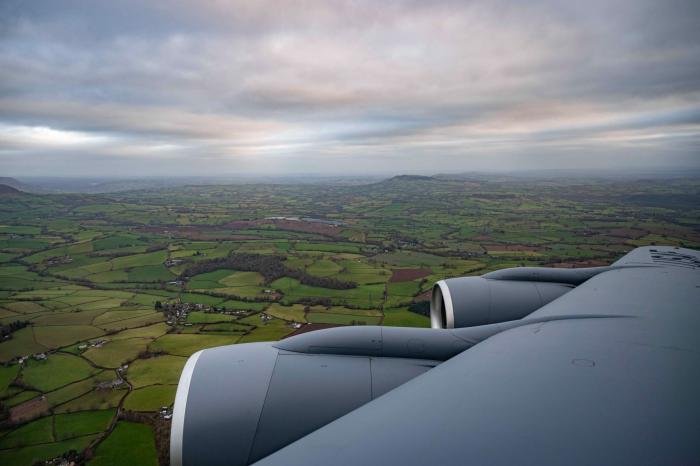The KC-135 Stratotankers of US Air Force’s 100th Air Refueling Wing (100th ARW) at RAF Mildenhall are to regularly conduct low-level flying training.
On Friday, December 15, there was the unusual sight of a US Air Force Boeing KC-135R Stratotanker flying low over large parts of Wales. This sortie to Low Flying Area 7 was followed by a brief press release and photos on the RAF Mildenhall website stating that: “The 351st Air Refueling Squadron conducted a low-altitude flying KC-135 mission over the United Kingdom, Dec. 15, 2023. This was the first low-altitude flying mission conducted by the 351st ARS, demonstrating the capabilities and readiness of the aircraft and aircrew.”
KeyAero contacted the 100th ARW, of which the 351st Air Refueling Squadron is a part, to find out more. Intriguingly, such low-level flying is to become a regular part of training for the unit’s aircrew.
Currently, there are two crews that will undertake low-altitude flying training though this is set to increase. A spokesperson for the 100th ARW told KeyAero: “These crew members will pave the way for the rest of the crew force, with the ultimate goal of training all crews…the initial cadre will conduct such flights once a month until the entire scheduling and execution process is established for all crew members. A 100% solution for each phase must be achieved before expanding the programme, with completion targeted by March 1, 2024.”

According to the unit this equates to one low-altitude flight per month for the first three months of 2024. “Subsequently, the frequency is anticipated to increase to two flights per month as more crews undergo training to gain experience and proficiency.” The spokesperson revealed that current training guidance from the 100th ARW Operations Group states that “the lowest permissible altitude is 1,000ft above ground level, with momentary deviations allowed to accommodate changes in terrain.”

KeyAero asked for more details on why such training would be useful to air-to-air refuelling tanker crews and when such low-altitude flying would be required in an operational scenario. The 100th ARW spokesperson said: “This training is essential for flying below hostile radar, enabling closer proximity to the front line with increased fuel capacity for receivers.” They added: “…we’re giving any potential adversary a different problem set to address on a strategic level by creating problems for them at the tactical level. When adversaries know the USAF can employ airpower in a contested environment, side-by-side with capable Ally and Partner forces, they are more likely to respect national sovereignty and make decisions that improve global safety and security. Additionally, the 100th ARW Vision is to extend reach and deterrence through warrior-minded airmen.”


Asked if the KC-135 crews in the future are going to be training to fly even lower the response was: “Currently, training will occur at 1,000ft to mitigate risks to crews, aircraft, and the general population.”
KeyAero also enquired if low-altitude training was to be conducted more widely in the USAF KC-135 community to which the 100th ARW spokesperson replied: “Presently, only the 100th ARW and the Weapons School actively train for this mission. Once the training plan is completed, information will be shared with sister units to facilitate their use of established practices.”

